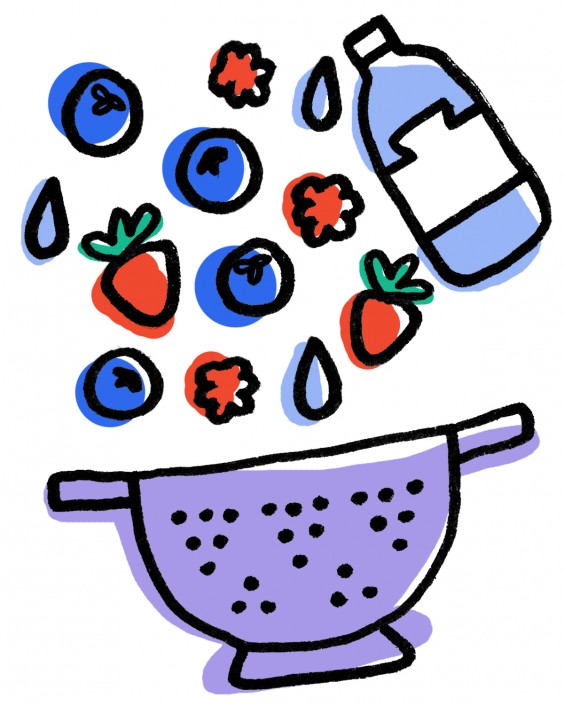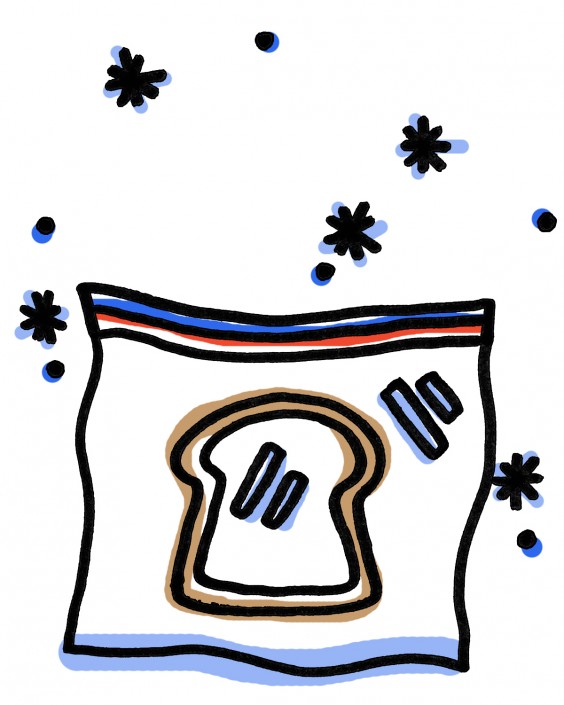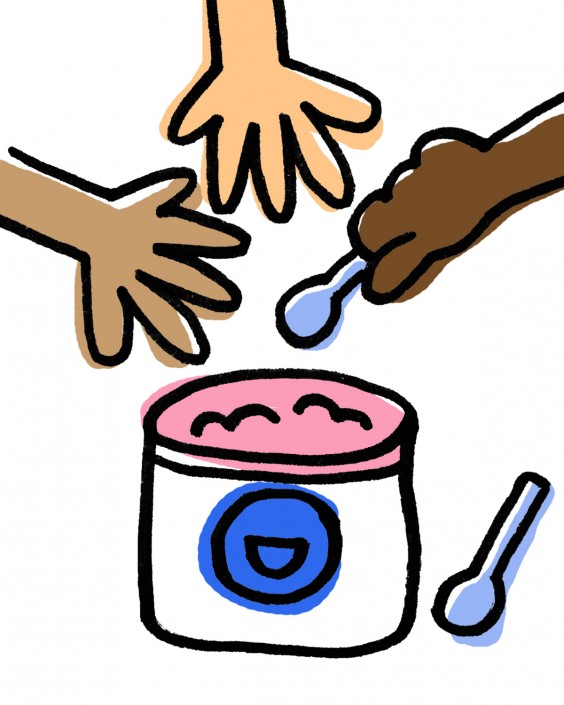How to Stop Good Food From Going Bad So Quickly
OCTOBER 5, 2016 |Wasting money is the worst, and wasting food is a close second. By now, we’ve all probably heard that god-awful stat about Americans wasting some 40 percent of their food. But when that fruit or bread starts to grow hairy mold faster than what seems like the speed of light, it’s a fate that can be difficult to avoid.
Still, I’m trying to do better, both for the sake of my wallet and the environment. So I called up Kathleen Riggs, a food preservation and food safety expert at Utah State University’s Iron County Extension. I wanted to get her take on why some of my everyday staples start to go south so fast, plus the steps I could take to try slowing the spoilage process. Here's what I learned.
Berries
You know how this goes. You bring home a box of jewel-like raspberries or strawberries (with a price tag to match) from the market. By the next day, half of them have already started to turn moldy and mushy.
Why They Go Bad So Fast
Berries are moist, delicate fruits, and when they’re packed tightly in a small clamshell or container, it’s easy for mold to spread from one berry to the next and for spoilage-speeding moisture to get trapped.
How to Slow the Spoilage
Gently examine your berries and get rid of any moldy ones as soon as you bring them home. To kill off any lingering mold, give them a quick soak in a 3:1 solution of water and white vinegar, Riggs says. Dry them thoroughly with a paper towel or a salad spinner, and store them in a container with plenty of air circulation, like a colander. The one exception? Raspberries. Get rid of moldy ones ASAP, but don’t rinse them until right before eating. “They have a hollow center, and moisture can get trapped in there if you rinse them before,” Riggs says.
Bread
Those squishy white loaves that are loaded with preservatives will stay good for quite a while. But the artisan loaf from the farmer’s market you paid twice as much for? Within a few days, it’ll have mold spores, Jackson Pollock-style, all over the surface.
Why It Goes Bad So Fast
Mold loves warm, moist environments—which is exactly what you get when you place bread in a bag and put it in a semi-warm spot, like your kitchen counter, Riggs says. Plus, many loaves contain ingredients, like milk, that just don’t last long at room temperature.
How to Slow the Spoilage
Slice off the part of the loaf you plan to eat within a day or two and let that hang out in its packaging on the counter. (If you notice moisture forming in the bag, open it to let it breathe, Riggs says.) And if you spot a little bit of mold anyway? As long as you’re healthy, slice off the mold, cutting at least an inch around, and eat. “Mold spores, even though you can’t see them, usually extend at least an inch,” Riggs says. (If you have a sensitive stomach or a compromised immune system, you’re better off tossing it.)
As for the rest of the bread? Wrap it well (try foil or plastic wrap), seal in a zip-top bag, and stick it in the freezer. When you’re ready to eat more, let it thaw and toast it up, Riggs says. It won’t be quite as delicious, but it beats stale, moldy bread.
Leafy Greens
Bagged salad greens always have an expiration date that seems far off. And yet half the leaves in the bag or box are already soggy and stinky the minute you open it up.
Why They Go Bad So Fast
Just like with berries, moisture is to blame. It ends up getting trapped in the airtight packaging, turning leaves slimy and brown, Riggs says.
How to Slow the Spoilage
When you get home, open up those bags or boxes ASAP. “Take the greens out of the package, rinse them, and dry them well. Then roll them in paper towels and stick them in a fresh bag,” Riggs says. Leaving the paper towels in place will help sop up additional moisture, keeping your greens drier—and fresher—for longer.
Another tip: If your bagged greens aren’t chopped (like a head of lettuce) and you want to pre-chop them to save time, tear the leaves with your hands instead of chopping them with a knife. “The cut parts react with the knife’s stainless steel blade, and they start to oxidize and turn brown,” Riggs says.
Avocado
Unless you’re making guac for a crowd, it’s tough to use a whole avocado at once. But whatever you end up storing in the fridge for later usually starts to turn a sickly shade of brown within a few hours.
Why It Goes Bad So Fast
When you slice into an avocado, the surface is exposed to oxygen and starts to turn brown, Riggs says. “The same happens with apples and bananas. It’s just a given.”
How to Slow the Spoilage
Forget leaving the pit intact (does precisely nothing) or rubbing the surface of the avocado flesh with lemon juice (works but barely). Instead, rub the surface of the avocado flesh with a thin layer of olive oil, put the avocado in a sealed bag, and stick it in the fridge. “The olive oil creates a barrier, so the avocado flesh is exposed to less air,” Riggs says. If you still spot some brown when you’re ready to eat the avocado, just scrape it off with a spoon. Unless the avocado is overripe, it’ll still be green underneath, Riggs says.
Ice Cream
It’s a sad day when you open up that half-eaten pint of premium ice cream only to find that the surface is covered in ice crystals.
Why It Goes Bad So Fast
Ice crystal-y ice cream isn’t actually spoiled, Riggs says. It’s just covered in a layer of unappetizing frost that forms because of—you guessed it—too much moisture. “Ice crystals will form in frozen foods that are in a container where there’s air space when the container isn’t completely full,” she says. “Moisture tries to evaporate while it’s freezing, and it gets trapped.”
How to Slow the Spoilage
Try covering the surface of your ice cream with a layer of freezer paper before putting the lid back on. Freezer paper has a plastic underside that acts like a barrier to prevent moisture loss, explains Riggs. (You can find freezer paper at most supermarkets, near the parchment paper and tin foil.) That can help stop water from evaporating out of your ice cream and forming crystals on the surface. Or just invite some friends over to polish off the pint in one go, so you don’t have to worry about sticking it back in the freezer.
Diet Solutions University is a Subsidiary of Master Fitness 21.
Diet Solutions University is a Subsidiary of Master Fitness 21.





